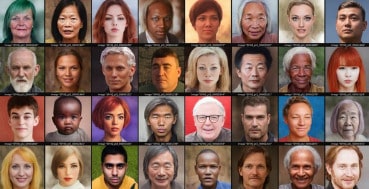AI-generated faces are becoming so realistic that people often can’t detect whether or not they are human.
A new study has revealed that AI-made faces of white people may appear especially realistic, with humans choosing them more often as real faces than actual human faces. And while humans seem unable to tell apart real faces from fake ones, a machine learning system developed by the researchers proved it can complete the task with 94 percent accuracy.
During the experiment, 124 participants tried to determine which of the faces they were shown were machine-made. Participants judged 66 percent of AI-generated faces of white people as human. In comparison, only 51 percent of real human faces were judged as such. The scientists termed the phenomenon “AI hyperrealism.”
Paradoxically, respondents who made the most errors in this task were the most confident of their choice, a result scientists attribute to a psychological tendency to overestimate competence at a task known as the Dunning-Kruger effect.
The study results may have implications for detecting fraud.
“If people mistake AI faces as human but have low confidence in their judgment, they may respond more cautiously (e.g., investigating an online profile),” the scientists write. “However, if they are convinced their judgment is correct, their errors may be more consequential (e.g., falling for a fraudulent profile).”
The research was conducted by a team of psychologists from the Australian National University, the University of Toronto, the University College London, the University of Amsterdam and the University of Aberdeen. The findings were published in the journal Psychological Science.
The study also found that the results did not hold for images of people of color, possibly because the algorithm used to generate AI faces was largely trained on images of white people. This means that AI could produce more realistic situations for white faces than faces of other racial denominations. The disparity could lead to real-world outcomes such as misleading scientific conclusions and social biases.
“If AI faces do appear more realistic for white faces than other groups, their use will confound perceptions of race with perceptions of being ‘human’,” the researchers wrote.
Researchers also conducted a second experiment in which they tried to determine which visual differences between AI and human faces people are most likely to misinterpret.
The team asked 610 participants to rate the faces according to 14 attributes, including eye contact, attractiveness, age and symmetry. The main factors that led people to erroneously believe AI faces were human included greater proportionality in the face, greater familiarity and less memorability.
Article: Study finds people believe AI-generated faces are real, especially white ones
